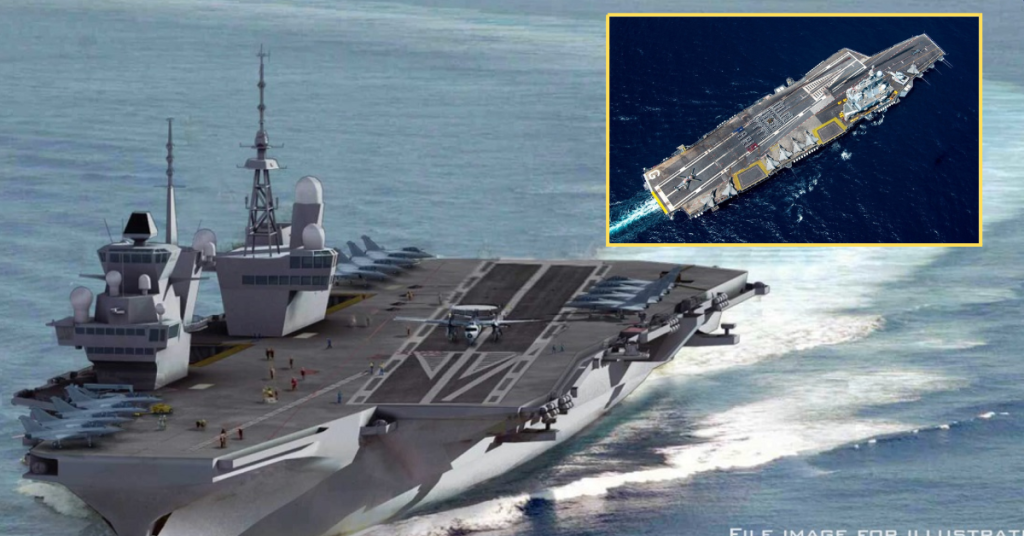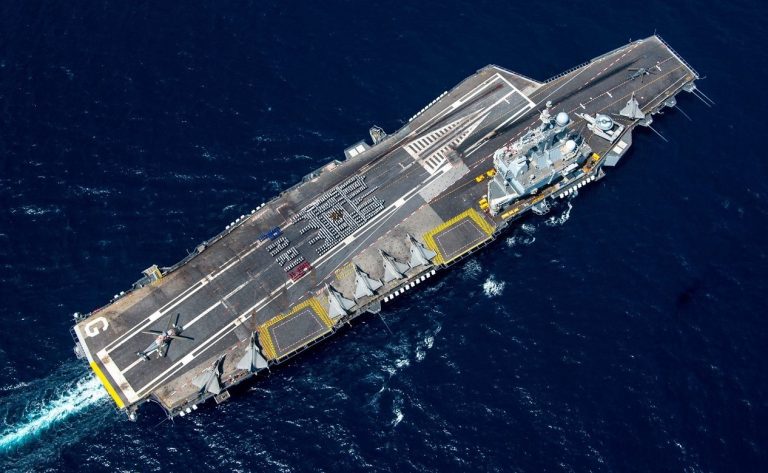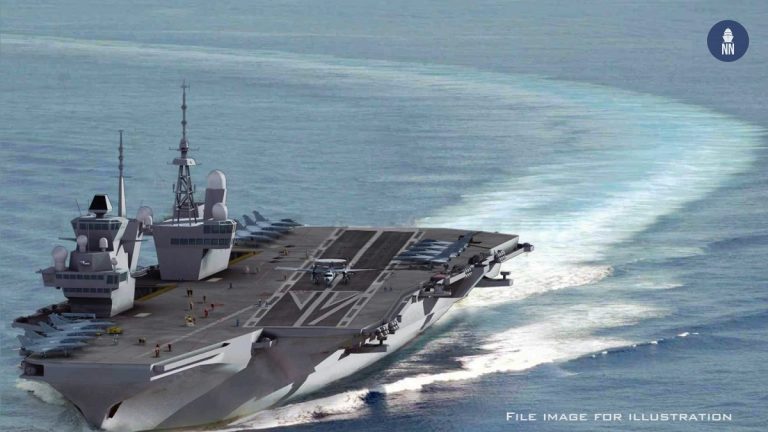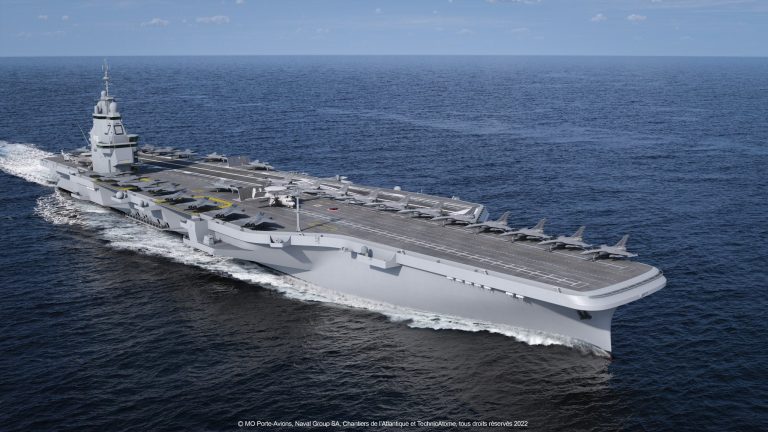
The French Navy is planning from a long time to design and develop a 2nd aircraft carrier, which can be used by France specifically when the current French aircraft carrier, the nuclear-powered Charles de Gaulle, is in its maintenance periods. The future aircraft carrier of the French Navy is known as the PA-NG. Construction of the PANG is expected to begin around 2025 and it will enter service in 2038. The ship will be nuclear-powered and feature the Electromagnetic Aircraft Launch System (EMALS) catapult system.

Recently, France’s Naval Group has unveiled a scale model of the nuclear-powered, all-electric, new generation aircraft carrier which is to replace the nuclear-powered Charles de Gaulle in 2038.
Known for the time being as the PANG (for Porte Avion Nouvelle Génération), the 75,000 tonne (82,673 tons) ship will be 310m (1,017 ft) long and 85m (279 feet) at the widest point of the carrier deck.
The two nuclear reactors, provided by TechnicAtome, will provide electricity for three shaft drives (for a size comparison, the larger US aircraft carriers have four shaft drives). The CEA (Commissariat à l’énergie atomique et aux énergies alternatives) atomic energy commission will oversee the execution and coordination of the reactors, which will only need to be refueled once every 10 years — meaning, at least in theory, the ship could stay at sea for that entire time.
PANG will carry about 32 new generation fighters, up to three E-2D Advanced Hawkeyes (France ordered three in the last days of 2021, for delivery in 2028), and a number of unmanned aircraft.

It will be built by a joint venture, MO Porte Avions (the MO stands for Maîtrise d’Oeuvre i.e. execution and coordination), created in March 2021 between Naval Group and the Chantiers de l’Atlantique. Olivier de Saint Julien, the director, said at the Euronaval show — which opened Tuesday in Le Bourget, in the northern suburbs of Paris — that the Chantiers de l’Atlantique had a dry dock in Saint Nazaire, on the west coast of France, which was big enough to build the PANG. That’s key, because the existing Naval Group dry dock used for the Charles de Gaulle is too small, as the PANG will outclass the older carrier by 159 feet in length and 68 feet in width.
In March this year a US Navy E-2D Advanced Hawkeye made a first landing on the Charles de Gaulle in the framework of NATO’s enhanced Vigilance Activities in Romanian and Bulgarian airspace. As Philippe stressed today, France and the United States are “the only two navies in the world operating nuclear aircraft carriers with catapults and arresters” so it is vital they be interoperable. French Rafales have also in the past landed and taken off from US aircraft carriers. There are no French manufacturers of catapults so the PANG will have US-made electromagnetic ones, like those on the US Navy’s Gerald R. Ford-class aircraft carriers, Philippe added.

The decision to replace the Charles de Gaulle with another nuclear-powered ship was taken by President Emmanuel Macron in December 2020. The design revealed today may get tweaked between now and 2025 when the design will be fixed, Saint Julien explained. “The first sea trials are expected to take place in 2036, the ship delivered to the Navy in 2037 and operational in 2038 at which point the Charles de Gaulle can retire,” he said.
The vessel that will be delivered to the Navy will not necessarily have everything on-board that the Navy would like — at least, not right away. “It’s going to be designed in such a way that it can be modernised incrementally and the combat system can evolve,” Saint Julien said. “We don’t know today what kind of technology will be available in 15 years time so we need to allow for new technology to be able to be easily fitted.”
PANG will have a crew of 2,000, some of whom will be aircraft engineers “as the Navy wants to be able to undertake the sorts of repairs on-board that normally would be done by the manufacturer.”






